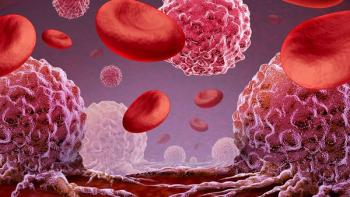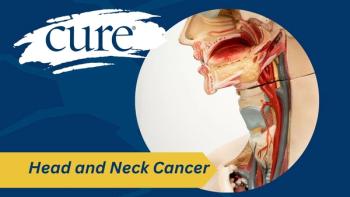
Trials Will Improve Treatment Decisions in Triple-Negative Breast Cancer
The treatment landscape for triple-negative breast cancer is shifting as findings from trials continue to be explored.
Treatment questions around treating patients with triple-negative breast cancer (TNBC) are finally being answered, thanks to recent findings from clinical trials examining neoadjuvant treatment, Angela DeMichele says, also mentioning that the promising pathologic complete response (pCR) rates for some of these agents don’t necessarily point toward improved survival.
In a presentation during the 2016 International Congress on the Future of Breast Cancer, DeMichele, professor of Medicine & Epidemiology and co-leader of the Breast Cancer Program at the Abramson Cancer Center, University of Pennsylvania, said that having a deeper understanding of how patients with TNBC respond to neoadjuvant regimens helps to further individualize therapy while simultaneously informs adjuvant treatment decisions.
Although knowledge of the many categories of TNBC has advanced, the standard of care in this setting remains anthracycline-based chemotherapy, DeMichele noted. Additionally, she added, nab-paclitaxel is a reasonable alternative for patients who are allergic to paclitaxel, and there is no clear role for bevacizumab. The remaining challenge for clinicians is how to best treat patients who often have a difficult and poor prognosis.
“We do know that a subset of patients with triple-negative breast cancer is actually exquisitely sensitive to chemotherapy,” DeMichele explained. “Yet, our
ability to predict who is going to respond is quite limited.”
Role of Platinum-Based Therapy
Long-term outcomes from two neoadjuvant trials evaluating the addition of carboplatin—CALGB 40603 and GeparSixto—were reported at the 2015 San Antonio Breast Cancer Symposium. In the randomized phase 2 CALGB 40603 study, patients received weekly paclitaxel followed by dose-dense doxorubicin/cyclophosphamide plus either bevacizumab or carboplatin or a combination of the two. In GeparSixto, paclitaxel remained the backbone, but notably, said DeMichele, it was administered concurrently with nonpegylated liposomal doxorubicin and carboplatin in the experimental arm—all of the drugs given concurrently and all the patients receiving bevacizumab.
These differences in the two trials led to some significant differences in outcomes, she said. Three-year event-free survival in the GeparSixto trial was 85.8 percent compared with 76.5 percent in the CALGB 40603 arm, suggesting a better overall prognosis and larger incremental carboplatin effect. However, “when we tease out these data,” said DeMichele, “we could have seen pharmacologic synergy by giving all of these drugs simultaneously [in GeparSixto].”
And, she added, “in both trials, we saw significant toxicity, and this is something we encounter every day in our patients when we try to add carboplatin to these regimens.” Although both trial results suggest benefit, currently not enough data exist to be conclusive, the chemo backbone and carboplatin dose/schedule may be critical to optimal efficacy, and long-term effects of added toxicity are not known, DeMichele said. “We really need to individualize who we’re going to give carboplatin to in the triple-negative setting.”
PARP Inhibitors
DeMichele said there is much excitement about PARP inhibitors in the neoadjuvant and adjuvant setting, particularly in patients who have an underlying alteration in DNA repair, either due to a BRCA mutation or some other abnormality.
She is one of the investigators on the I-SPY2 trial, and she noted recently published pCR findings from the TNBC cohort of this trial that indicated the addition of veliparib to carboplatin in the neoadjuvant setting has the potential to be highly successful in a subsequent phase 3 randomized trial.
In this portion of the I-SPY2 trial, the estimated rates of pCR rate for those with TNBC with veliparib and carboplatin were 51 percent compared with 26 percent for a standard neoadjuvant therapy. Adverse events were higher in the veliparib group. Overall, these findings suggest an 88 percent probably of
success for veliparib and carboplatin in a phase 3 study.
Role of Anthracyclines and Taxanes
Data from a prospective registry study reported at the 2016 ASCO Annual Meeting may shed light on the need for anthracyclines in the neoadjuvant setting. In the PROGECT trial, 77 patients received neoadjuvant carboplatin (AUC 6) + docetaxel (75 mg/m2) every 21 days for a total of four to six cycles.
“Patients achieving pCR with this anthracycline-free regimen demonstrated excellent relapse-free survival (96 percent at 2.3 years) without adjuvant anthracycline chemotherapy,” DeMichele reported, suggesting that a “significant proportion of TNBC patients achieve pCR with neoadjuvant carboplatin-docetaxel (CbD) and can be spared anthracycline exposure.”
She cautioned, however, that this is an observational study and there is no comparator arm and no randomization. Nevertheless, “this regimen did behave in the way that other regimens behave in the neoadjuvant setting … and certainly this data is quite compelling.” She said that while anthracyclines remain the standard of care, researchers are anxiously awaiting results from an ongoing randomized phase 2 neoadjuvant study comparing the CbD regimen to carboplatin/paclitaxel (
To address the issue of optimal taxane dosing, DeMichele noted results from the ETNA trial were also reported at ASCO this year. In this neoadjuvant trial, weekly paclitaxel dosed at 90 mg/m2 was compared with weekly 125 mg/m2 nab-paclitaxel (nab-P). Both regimens were administered for three weeks with one week of rest over four cycles and followed by four cycles of an anthracycline regimen selected by the investigator. In the paclitaxel arm, 110 of 349 patients had triple-negative disease, and this was true for 109 of 346 patients in the nab-P cohort.
There was an improvement in pCR rate with nab-P overall but it did not reach the 10 percent threshold set for difference in pCR rates. In the subgroup analysis of TNBC patients, no statistically significant benefit was seen with one taxane over the other, and nab-P was more toxic, with more grade 3 myelosuppression as well as fatigue and vomiting, said DeMichele.
“At this point, we don’t have enough evidence to convince us that nab-paclitaxel is superior, but I think we also do now have the benefit of knowing that it’s not inferior. For those patients who have allergic reactions to paclitaxel, nab-paclitaxel could be a very good alternative.”
Bevacizumab and Capecitabine
DeMichele noted that results are mixed, following numerous trials with bevacizumab. In an update of findings from the phase 3 ARTemis trial reported at ASCO this year, a very small pCR difference was seen between the control chemotherapy arm versus the group where bevacizumab was added, and in the TNBC subgroup, no difference was seen in disease-free or overall survival.
Despite a lack of defined benefit currently, DeMichele said, “Neoadjuvant therapy can give us a very nice way of starting to sort out biomarkers, and hopefully with these neoadjuvant trials, we can start to tease out, ‘is there a group of patients who will benefit with bevacizumab, because right now, we don’t know who they are.”
Additionally, neither adjuvant nor neoadjuvant data are compelling enough in her view to add capecitabine to these regimens for all patients. “However, I do think for patients who are at very high risk, with substantial residual disease after neoadjuvant therapy, it’s something I am considering.”
DeMichele is optimistic about the role of post-neoadjuvant trials as a way to improve treatment decision making. “This is a great model, because what it allows us to do is to give additional therapy to patients who aren’t responding to standard therapy. Rather than continuing to add more and more therapy to every patient—many of whom don’t need it—we can really focus on those patients who aren’t getting the benefit from our standard therapies and give them something else.
“This trial model allows us to answer that type of question with many fewer patients than would be required in a large adjuvant setting. I think you’re going to see more and more of these kinds of trials.”





